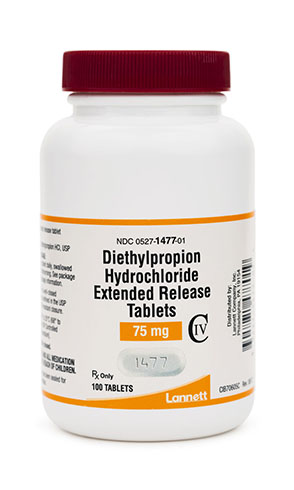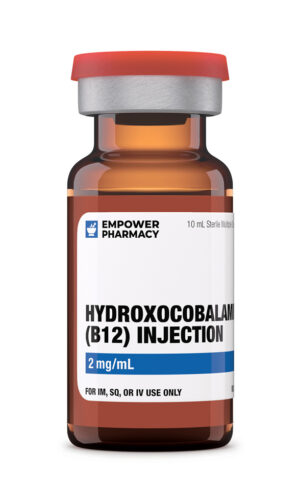- Description
- Reviews (0)
- Store Policies
- Inquiries
Description
Overview of Methionine / Inositol / Choline Bitartrate Capsules
-
Dosage Strengths of Methionine / Inositol / Choline Bitartrate Capsules
- Methionine / Inositol / Choline Bitartrate 150/300/300 mg
Methionine
Methionine is a branched-chain amino acid that contains sulfur. Methionine, a precursor for cellular methylation processes, is crucial for lipid metabolism, polyamine production, immune system function, heavy metal chelation, and redox balance maintenance. On the other hand, dietary methionine limitation in rodents decreased insulin resistance, increased energy expenditure, and improved adipose tissue lipolysis and fatty acid oxidation.
Methionine’s metabolite S-adenosyl methionine may be responsible for the lipotropic effects of methionine (SAM). Methionine is converted into SAM through an energetic process. SAM has been studied as a potential treatment for depression, osteoarthritis, and liver conditions when taken orally or intravenously. SAM may act as a methyl donor in the metabolic processes that control lipid homeostasis, DNA stability, gene expression, and neurotransmitter release, which may account for the benefits it confers.
Inositol
Nine stereoisomers of the cyclic sugar alcohol known as inositol make up this family of compounds. Myo-, Scyllo-, Muco-, Neo-, Allo-, Epi-, Cis-, and the enantiomers L- and D-chiro-inositol are the stereoisomers of the inositol family. Myo-inositol and D-chiro-inositol are two of the most prevalent biologically active versions of these compounds. Myo-inositol is transformed into the D-chiro-inositol isomer by the enzyme epimerase, preserving the ratios of the two isomers in different organs. In most tissues, myo-inositol concentration is physiologically many times higher than D-chiro-inositol concentration.
The lipid bilayer of cell membranes contains phosphatidylinositol, a derivative of myo-inositol. A variety of cellular processes, such as membrane trafficking, autophagy, cell migration, and survival, depend on phosphatidylinositol and its phosphorylated variants to function. Phosphoinositide lipid signaling disruption has been linked to cardiovascular, metabolic, and cancerous diseases.
In treating diseases connected to the metabolic syndrome, inositol has demonstrated clinical advantages. Supplementing with inositol has been proven to improve weight loss, reduce fat mass, raise the expression of genes involved in lipid metabolism and insulin sensitivity, and enhance serum lipid profiles with polycystic ovarian syndrome in females. In overweight/obese women with PCOS, myo-inositol alone or in combination with D-chiro-inositol dramatically decreased weight, BMI, and waist-hip circumference ratios. When inositol supplementation was combined with a low-calorie diet, weight loss, a decrease in fat mass, and an increase in lean mass were all expedited. Additionally, supplementing with inositol was linked to a decreased incidence of gestational diabetes and preterm birth in pregnant women. Research is currently being done to determine whether inositol may be utilized to treat different tumors.
Choline
Choline is an essential nutrient that is naturally present in certain foods and available as a supplement. Additionally, a tiny quantity can be produced by the body on its own in the liver, but not enough to meet daily requirements. Acetylcholine, a neurotransmitter that is produced from choline, aids in the contraction of muscles, triggers pain perception, and aids in memory and thought processes. The liver is where most choline is metabolized; there, it is changed into phosphatidylcholine, which aids in the formation of proteins that carry fat and the breakdown of cholesterol.
Methionine
Methionine, an important sulfur-containing amino acid, undergoes transmethylation processes to produce homocysteine and S-adenosylmethionine (SAM), which are metabolic byproducts. SAM is a ubiquitous methyl donor and a co-factor in many physiological and cellular processes, including lipid homeostasis. SAM is transformed into S-adenosyl homocysteine (SAH) and ultimately homocysteine by giving up its methyl group. SAM functions as a methyl donor in the synthesis of phosphatidylethanolamine, which then results in the production of phosphatidylcholine. Phosphatidylcholine is carried to other tissues via very low-density lipoproteins (VLDL), which are formed in the liver. A fatty liver or hepatic accumulation of triglycerides results from insufficient levels of SAM in the liver, which interferes with VLDL assembly.
SAM is essential for the control of epigenetic regulation because it encourages DNA methylation. One well-known method of transcriptional suppression is methylation close to gene promoters. As a result, SAM may serve as a sensor for the nutritional condition of the cell and alter the expression of genes that affect hunger, glucose metabolism, and lipogenesis epigenetically. SAM serves as a methyl donor in the production of creatine, a high-energy molecule that is believed to enhance exercise performance.
Inositol
All inositol stereoisomers share the same chemical formula as glucose and are all six-carbon sugar alcohols structurally (C6H12O6). Both myo-inositol and D-chiro-inositol mimic the effects of insulin. In diabetic rodents, rhesus monkeys, and humans, inositol treatment reduces post-prandial blood glucose levels and enhances insulin sensitivity. These advantages might be credited to inositol’s impact on the insulin signaling system. Phosphatidylinositol-3-kinase (PI3K) is activated when the insulin receptor is stimulated. In order to activate Akt later on, phosphatidylinositol’s phosphorylated forms function as second messengers. Glycogen synthase activity is increased by Akt because it deactivates the enzyme glycogen synthase kinase-3. Via boosting the translocation of the glucose transporter (GLUT4) to the surface of skeletal muscle cells, this lowers blood glucose levels by increasing glucose uptake.
Excess glucose in the blood is frequently stored as fat in the liver and the area around visceral organs. Inositol supplementation in the diet prevented rats from gaining weight and from accumulating lipids in their livers. Hepatic lipid metabolism and gluconeogenesis are thought to be influenced by inositol-mediated activation of PI3K/Akt signaling. SREBP-1 and PPAR-, which are involved in fatty acid synthesis, oxidation, and lipid transport, are likewise impacted by inositol on their transcription.
Choline
The polar head group of phosphatidylcholine contains a significant amount of choline. All of the fundamental biological functions, including information transfer, intracellular communication, and bioenergetics, depend on phosphatidylcholine’s involvement in the preservation of cell membrane integrity. All these processes would be adversely impacted by inadequate choline consumption. Sphingomyelin, a different membrane phospholipid that is crucial for maintaining cell shape and function, has a significant amount of choline as well. The fact that choline deprivation in cell culture results in apoptosis, or programmed cell death, is interesting and not surprising. This appears to be caused by changes in the amount of phosphatidylcholine in cell membranes as well as a rise in ceramide, a precursor and metabolite of sphingomyelin. Ceramide buildup, brought on by choline deprivation, seems to stimulate Caspase, a particular type of enzyme that controls apoptosis. Choline undergoes an oxidation process to produce betaine, also known as trimethylglycine. One element that helps keep homocysteine levels low is betaine, which creates L-methionine from homocysteine. A substantial risk factor for atherosclerosis, as well as other cardiovascular and neurological conditions, is elevated homocysteine levels. One of the main neurotransmitters, acetylcholine, is synthesized with the help of choline. It is thought that enough acetylcholine levels in the brain can fend against dementia, especially Alzheimer’s disease.
7-keto-DHEA may increase T3 levels.16 People interested in starting 7-keto-DHEA supplementation, particularly those who have a thyroid disorder or who are taking thyroid hormone, should consult a physician.
7-keto-DHEA may lower blood pressure.6 Individuals with low blood pressure should consult with a physician prior to use of this supplement.
At the time of writing, there were no other reported contraindications/precautions for 7-keto-DHEA. Individuals with known allergy to any of the capsule components or DHEA should not use this product.
Methionine
A maternal diet high in methionine may be harmful to the development of the fetus. This is due to the possibility that more glycine and serine may be needed to catabolize the extra methionine, thereby leading to a shortage in these amino acids. Homocysteine can also be produced when methionine levels are too high. Preeclampsia, spontaneous abortion, placental rupture, and miscarriage are all linked to elevated plasma homocysteine levels.
Inositol
Given its use in the treatment of polycystic ovarian syndrome and gestational diabetes, myo-inositol may be considered relatively safe during pregnancy. In a meta-analysis of randomized controlled trials, 2 g of myo-inositol administered orally twice daily was reported to be safe during pregnancy. However, high concentrations of D-chiro-inositol negatively affect the quality of oocytes. Therefore, D-chiro-inositol may not be used by women seeking to get pregnant. Effects of other inositol isomers are not well characterized.
Choline
Most prenatal vitamins lack choline, which is present in egg yolks, lean red meat, fish, poultry, legumes, nuts, and cruciferous vegetables, and more than 90% of expecting mothers consume less than the advised quantity. According to a recent Cornell study, moms who took twice the recommended quantity of choline throughout their pregnancies had children who fared better on a difficult activity demanding continuous attention. In the Cornell research, all pregnant women ate a prepared diet containing a specific amount of choline throughout the duration of the third trimester. The adequate intake (AI) limit of 450 mg/day was slightly exceeded by one-half of these women, who ingested 480 mg of choline daily. The daily choline consumption of the other half was 930 mg, or roughly double the AI threshold.
Methionine
Methionine intake by mothers may be too high and harm the development of the fetus. This is due to the possibility that more glycine and serine may be needed to properly catabolize the extra methionine, unintentionally leading to a shortage in these amino acids. Homocysteine can also be produced by the metabolism of excess methionine. Preeclampsia, placental rupture, spontaneous abortion, and miscarriage are all linked to elevated plasma homocysteine levels.
Inositol
Given its use in the treatment of polycystic ovarian syndrome and gestational diabetes, myo-inositol may be considered relatively safe during pregnancy. In a meta-analysis of randomized controlled trials, 2 g of myo-inositol administered orally twice daily was reported to be safe during pregnancy. However, high concentrations of D-chiro-inositol negatively affect the quality of oocytes. Therefore, D-chiro-inositol may not be used by women seeking to get pregnant. Effects of other inositol isomers are not well characterized.
Store this medication at 68°F to 77°F (20°C to 25°C) and away from heat, moisture and light. Keep all medicine out of the reach of children. Throw away any unused medicine after the beyond use date. Do not flush unused medications or pour down a sink or drain.
1.Martínez, Y. et al. The role of methionine on metabolism, oxidative stress, and diseases. Amino Acids vol. 49 2091–2098 (2017).
2.Zhou, X. et al. Methionine restriction on lipid metabolism and its possible mechanisms. Amino Acids vol. 48 1533–1540 (2016).
3.S-Adenosyl-L-Methionine (SAMe): In Depth | NCCIH. https://www.nccih.nih.gov/health/sadenosyllmethionine-same-in-depth.
4.Chiang, P. K. et al. S‐Adenosylmetliionine and methylation. FASEB J. 10, 471–480 (1996).
5.Obeid, R. & Herrmann, W. Homocysteine and lipids: S-Adenosyl methionine as a key intermediate. FEBS Letters vol. 583 1215–1225 (2009)
6.Sharma, A. et al. S-adenosylmethionine (SAMe) for neuropsychiatric disorders: A clinician-oriented review of research. Journal of Clinical Psychiatry vol. 78 e656–e667 (2017).
7.Kalra, B., Kalra, S. & Sharma, J. B. The inositols and polycystic ovary syndrome. Indian J. Endocrinol. Metab. 20, 720–724 (2016).
8.Bizzarri, M., Fuso, A., Dinicola, S., Cucina, A. & Bevilacqua, A. Pharmacodynamics and pharmacokinetics of inositol(s) in health and disease. Expert Opinion on Drug Metabolism and Toxicology vol. 12 1181–1196 (2016).
9.Donne, M. L. E., Metro, D., Alibrandi, A., Papa, M. & Benvenga, S. Effects of three treatment modalities (diet, myoinositol or myoinositol associated with D-chiro-inositol) on clinical and body composition outcomes in women with polycystic ovary syndrome. Eur. Rev. Med. Pharmacol. Sci. 23, 2293–2301 (2019).
10.Shokrpour, M. et al. Comparison of myo-inositol and metformin on glycemic control, lipid profiles, and gene expression related to insulin and lipid metabolism in women with polycystic ovary syndrome: a randomized controlled clinical trial. Gynecol. Endocrinol. 35, 406–411 (2019).
11.Effects of three treatment modalities (diet, myoinositol or myoinositol associated with D-chiro-inositol) on clinical and body composition outcomes in women with polycystic ovary syndrome.
12.Choline. The Nutrition Source. (2020, August 11). Retrieved June 29, 2022, from https://www.hsph.harvard.edu/nutritionsource/choline/
13.Mato, J. M., Martínez-Chantar, M. L. & Lu, S. C. S-adenosylmethionine metabolism and liver disease. Annals of Hepatology vol. 12 183–189 (2013).
14.Elshorbagy, A. K. et al. S-Adenosylmethionine Is Associated with Fat Mass and Truncal Adiposity in Older Adults. J. Nutr. 143, 1982–1988 (2013).
15.Yue, T., Fang, Q., Yin, J., Li, D. & Li, W. S-adenosylmethionine stimulates fatty acid metabolism-linked gene expression in porcine muscle satellite cells. Mol. Biol. Rep. 37, 3143–3149 (2010).
16.Da Silva, R. P., Nissim, I., Brosnan, M. E., Brosnan, J. T. & Labrador, C. ; Creatine synthesis: hepatic metabolism of guanidinoacetate and creatine in the rat in vitro and in vivo. Am J Physiol Endocrinol Metab 296, 256–261 (2009).
17.Ortmeyer, H. K. Dietary myoinositol results in lower urine glucose and in lower postprandial plasma glucose in obese insulin resistant rhesus monkeys. Obes. Res. 4, 569–575 (1996).
18.Pintaudi, B., Di Vieste, G. & Bonomo, M. The Effectiveness of Myo-Inositol and D-Chiro Inositol Treatment in Type 2 Diabetes. Int. J. Endocrinol. 2016, (2016).
19.Fan, C. et al. Effects of D-Chiro-Inositol on Glucose Metabolism in db/db Mice and the Associated Underlying Mechanisms. Front. Pharmacol. 11, 354 (2020).
20.Bevilacqua, A. & Bizzarri, M. Inositols in insulin signaling and glucose metabolism. International Journal of Endocrinology vol. 2018 (2018).
21.Kenney, J. L. & Carlberg, K. A. The effect of choline and myo-inositol on liver and carcass fat levels in aerobically trained rats. Int. J. Sports Med. 16, 114–116 (1995).
22.Andersen, D. B. & Holub, B. J. The relative response of hepatic lipids in the rat to graded levels of dietary myo-inositol and other lipotropes. J. Nutr. 110, 496–504 (1980).
23.Shimada, M., Hibino, M. & Takeshita, A. Dietary supplementation with myo-inositol reduces hepatic triglyceride accumulation and expression of both fructolytic and lipogenic genes in rats fed a high-fructose diet. Nutr. Res. 47, 21–27 (2017).
24.Choline. Uses, Interactions, Mechanism of Action | DrugBank Online. (n.d.). Retrieved June 29, 2022, from https://go.drugbank.com/drugs/DB00122
25.Rees, W. D., Wilson, F. A. & Maloney, C. A. Sulfur amino acid metabolism in pregnancy: The impact of methionine in the maternal diet. in Journal of Nutrition vol. 136 1701–1705 (American Institute of Nutrition, 2006).
26.Vitagliano, A. et al. Inositol for the prevention of gestational diabetes: a systematic review and meta-analysis of randomized controlled trials. Archives of Gynecology and Obstetrics vol. 299 55–68 (2019).
27.Isabella, R. & Raffone, E. Does ovary need D-chiro-inositol? J. Ovarian Res. 5, 1–5 (2012).
28.Roger, R., & January 3, 2022. (2022, January 3). Choline during pregnancy impacts children’s sustained attention. Cornell Chronicle. Retrieved June 30, 2022, from https://news.cornell.edu/stories/2022/01/choline-during-pregnancy-impacts-childrens-sustained-attention
Be the first to review “MIC Capsules”
General Inquiries
There are no inquiries yet.










Reviews
There are no reviews yet.